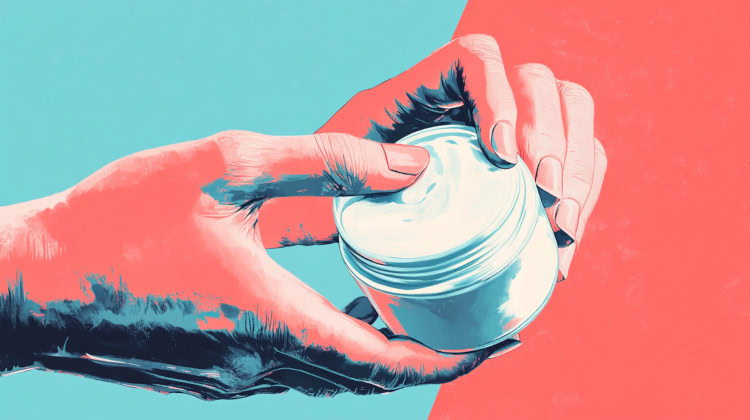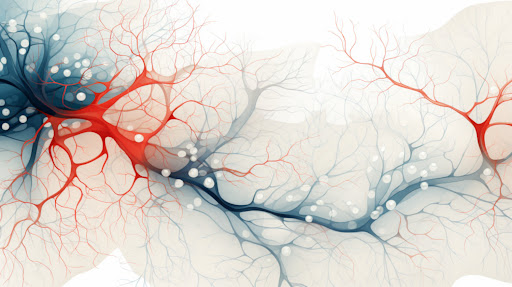In This Article
- Discovering Medical Cannabis
- Navigating the Transition
- Managing Neuropathic Pain with Cannabis
- Reclaiming Control
- More About Cannabis and Neuropathy
- How Common Is Cannabis as a Treatment?
- Can cannabis help with neuropathic pain?
- What cannabis is best for nerve pain?
- Can cannabis replace gabapentin?
- What type of cannabis is best for PTSD?
- Does cannabis help people with PTSD?
- Life After Medical Cannabis: A New Normal
- References
For one patient living with the daily challenges of neuropathy and PTSD, traditional treatment options were falling short. Prescription pills came with a list of side effects and offered only limited relief. The pain, especially in their hands and feet, was persistent, frustrating, and hard to manage.
Looking for a new path forward, they turned to medical cannabis. What started as a practical decision to seek better symptom control has since become an everyday routine. And it's one that’s helped them regain a sense of stability and comfort without the same reliance on pharmaceuticals.
Discovering Medical Cannabis
Like many patients navigating chronic conditions, this patient spent years relying on prescription medications for symptom relief.
But over time, the drawbacks became impossible to ignore. “They don’t work as well,” they explained, highlighting the side effects of the medications and summarizing the common experience of trying one pill after another, only to find limited relief paired with new complications.
Medical cannabis offered an alternative that felt worth exploring. While it was technically a new treatment path, it wasn’t unfamiliar territory.
“Yes,” they said when asked if they had used cannabis before—and “nope” when asked if they had any concerns about trying it as medicine. That confidence in cannabis set the stage for a shift in their care strategy. It became one focused less on managing side effects and more on managing symptoms.
For patients dealing with chronic pain, cannabis has become an increasingly common option. Research into its effects is still developing. For now, early findings and firsthand reports continue to shape how we understand the potential of cannabis for pain.
Navigating the Transition
After becoming a medical cannabis patient, the shift from pharmaceuticals didn’t happen overnight. Regardless, the difference was noticeable.
One of the biggest wins? “I was able to lower the dosage of my medicine for neuropathy,” they said. For someone managing ongoing pain and discomfort, reducing the need for prescription meds marked a turning point.
Instead of cycling through pills with harsh side effects, they built a routine around cannabis that worked for their body. “Indica and Momenta topical gel because it helps with my conditions,” they shared. “The gel takes the pain away in my feet and hands majorly.”
Many patients managing nerve pain report similar results when using targeted products like cannabis topicals. These fast-acting formulations allow for localized relief without the effects of oral medications. For others, certain strains—particularly those with more sedating, body-relaxing properties—may offer deeper, longer-lasting comfort. Ultimately, the best strains for pain come down to an individual level.
Managing Neuropathic Pain with Cannabis

Neuropathy isn’t just frustrating—it can be life-altering. Around 20 million people in the United States live with peripheral neuropathy. This can cause pain, numbness, and tingling, most often in the hands and feet.1
Prescription meds are often the first treatment option. The downside is that some patients find meds either don’t work well or come with too many side effects.
The same was true for this patient. After trying pills with little success, they turned to cannabis instead. “Dimmed ‘em down a lot,” they said, describing the way their symptoms eased with regular use.
Research around cannabis and nerve pain is still ongoing. A 2021 review found that cannabis-based medicines may offer short-term relief from neuropathic pain. They also noted that more high-quality studies are needed.2
That same year, the International Association for the Study of Pain (IASP) said they couldn’t officially recommend cannabis for pain because of limited evidence. Still, they emphasized that patient experiences shouldn’t be ignored.2
And those experiences are starting to stack up. According to recent survey results, many patients report that medical cannabis works as well as opiates for treating neuropathic pain. Sometimes, it may work even better, though everyone’s experience can vary.
Reclaiming Control
For this patient, finding relief wasn’t just about easing symptoms. It was about regaining a sense of control. “My conditions are under control,” they said. They noted that cannabis helped them manage daily pain without relying on meds that once defined their routine.
They also didn’t feel the need to justify their choice to others. “I didn’t, it’s none of their business,” they shared when asked if they discussed their cannabis use with friends or family. For them, this journey was personal and empowering.
By easing pain and reducing dependence on traditional medications, cannabis is more than a treatment. It's become a tool for taking their health into their own hands.
More About Cannabis and Neuropathy

How Common Is Cannabis as a Treatment?
Roughly ¼ of adults with chronic pain use cannabis as a treatment.3 Pain is still the number one reason people pursue medical cannabis, according to the 2023 Cannabis Conditions Report. For many, it offers a gentler alternative to pharmaceuticals.
Can cannabis help with neuropathic pain?
While research is still catching up, many patients report that cannabis helps them manage nerve pain more effectively. Some studies suggest cannabinoids may reduce pain intensity and improve overall comfort. What we know about cannabis for pain so far is promising for the future.
What cannabis is best for nerve pain?
Some of the best strains for pain promote relaxation and body-level relief. These are often indica-dominant varieties, frequently preferred for nerve pain. That said, everyone’s body responds differently. Learning what's generally the best for others can be a great starting point.
Can cannabis replace gabapentin?
Some patients have been able to reduce or stop taking gabapentin after introducing cannabis into their routine. However, that’s not the case for everyone. It's important to talk to a doctor before making any changes. When comparing the two, it's important to look at how marijuana and gabapentin stack up.
What type of cannabis is best for PTSD?
For PTSD, many patients lean toward indica strains or products with a balanced THC-to-CBD ratio. These options are often favored for their calming effects and sleep support. There are guides on the best strains for PTSD to use as a launching point.
Does cannabis help people with PTSD?
Cannabis may help reduce PTSD symptoms like anxiety and intrusive thoughts by interacting with the body’s endocannabinoid system (ECS). While research is ongoing, many patients say it helps improve mood and sleep.
Life After Medical Cannabis: A New Normal

With consistent cannabis use, things finally started to shift. “My neuropathy pain has subsided a lot, and I don’t take such a high dosage,” the patient shared. After years of managing symptoms with heavy medications, being able to dial back their prescriptions—and still feel in control—is a major win.
Cannabis didn’t just quiet the pain. It gave them breathing room and relief that felt sustainable. It gave them a routine that actually worked.
When asked if they’d recommend medical cannabis to others dealing with similar challenges, their answer was simple: “Yes, I do; all day, every day.”
References
- Centers for Disease Control and Prevention. Peripheral Neuropathy. NCBI Bookshelf. https://www.ncbi.nlm.nih.gov/books/NBK542220/ ↩︎
- Petzke F, Tölle T, Fitzcharles MA, Häuser W. Cannabis-Based Medicines and Medical Cannabis for Chronic Neuropathic Pain. CNS Drugs. 2021;36(1):31-44. doi: https://doi.org/10.1007/s40263-021-00879-w ↩︎
- Bicket MC, Stone EM, McGinty EE. Use of Cannabis and Other Pain Treatments Among Adults With Chronic Pain in US States With Medical Cannabis Programs. JAMA Netw Open. 2023;6(1):e2249797. doi:10.1001/jamanetworkopen.2022.49797
https://jamanetwork.com/journals/jamanetworkopen/fullarticle/2800119 ↩︎
The information in this article and any included images or charts are for educational purposes only. This information is neither a substitute for, nor does it replace, professional legal advice or medical advice, diagnosis, or treatment. If you have any concerns or questions about laws, regulations, or your health, you should always consult with an attorney, physician or other licensed professional.




